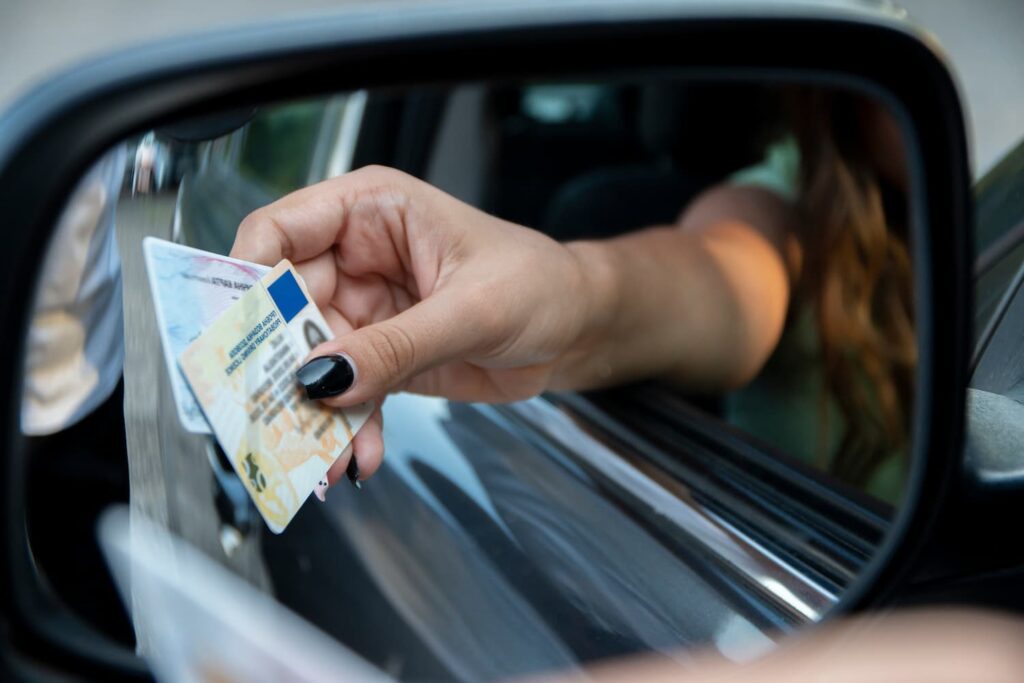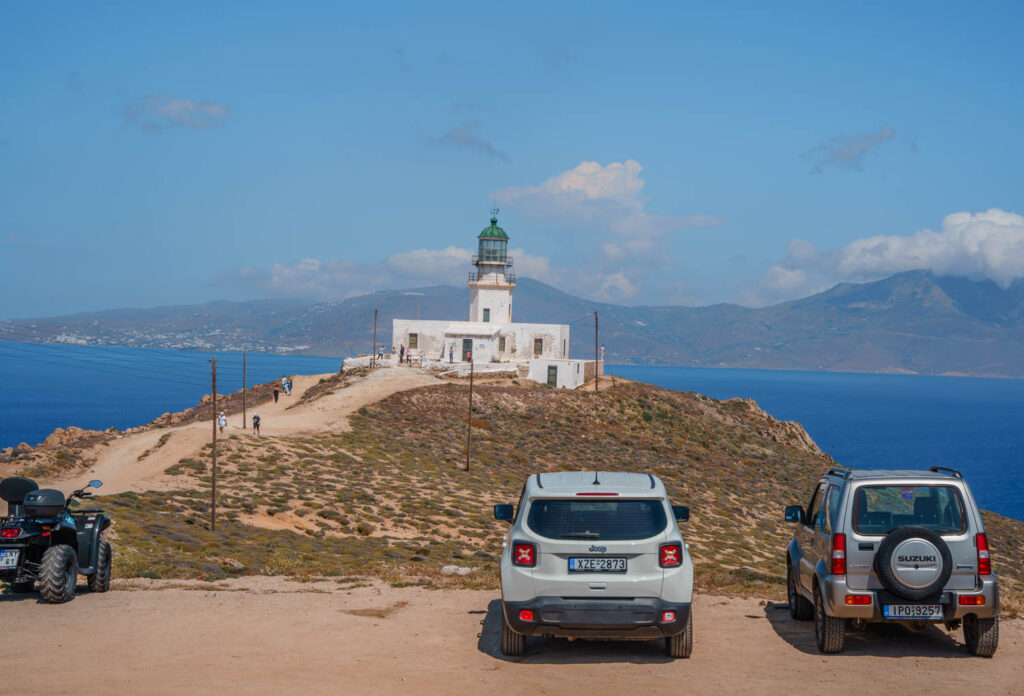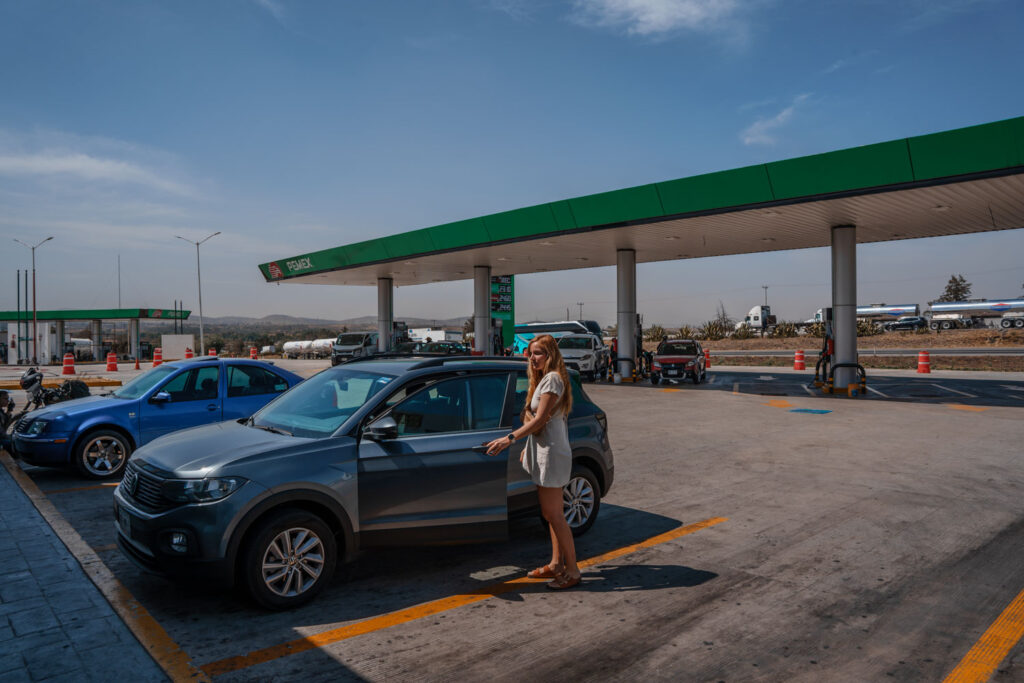Renting A Car In Europe: 9 Important Tips Before You Set Off

If you’re looking into renting a car in Europe, you’ve come to the right place! This post is dedicated to covering all the essential information you need to know about driving your way across this fantastic continent, from the shores of Spain to the mountains of Montenegro.
We’ve traversed a lot of Europe by car over the years, and our advice is based on first-hand experience. Elsewhere on this website, you’ll find plenty of country-specific tips for individual countries that we’ve visited.
While each country has its own unique quirks, there are a lot of requirements for renting a car in Europe that are universal. The focus of this post is to cover general pointers related to documentation, price, and laws related to getting a hire car in Europe. We’ve also included our recommendation on the best rental car company in Europe as well as how to cut down on costs.
Renting A Car In Europe: Quick Facts
#1 Should I Rent A Car In Europe?

Not every holiday in Europe needs to involve a car. Here are some things to consider before committing to hiring a vehicle.
PROS
✅ You have greater flexibility. Rather than relying on public transport schedules, you can set your own pace. That’s particularly handy if you want to make day trips from a city, as we did when we visited Delphi from Athens.
✅ It’s more convenient. If you’re carrying heavy luggage, suffer from mobility issues, or have children in tow, a car can make travelling much less stressful.
✅ Spend more time exploring. In general, we’ve found that having a car saves a lot of travel time, as you can go directly to your destination. The only exception is in busy city centres, where traffic jams might make public transport more appealing.
✅ Enjoy your personal space. Having a rental car in Europe is like being enveloped in a bubble of comfort. Nobody is pushing up against you, there’s no need to worry about pickpockets, and you are guaranteed a seat!
CONS
⚠️ It’s usually the more expensive option. Once you factor in the car hire, the petrol, the insurance, parking fees, and any tolls, you’ll probably find it’s actually quite a bit pricier than using public transport, especially if you’re travelling as a couple.
⚠️ Parking can be a headache. Not all cities have good parking options. Even those that do are prone to have confusing stipulations or finicky payment mechanisms.
⚠️ The driver can’t fully relax. Paying attention to the road means you might miss out on the sights and scenery.
⚠️ You must learn the local rules and regulations. Speed limits vary between European countries, while in places like the UK and Malta, people drive on the left instead of the right.
Is it safe to drive in Europe?
Having travelled widely in Europe, we can confidently say that overall, it is safe to drive in Europe. However, the quality of roads often varies between countries as well as between regions within those countries. Additionally, you’ll quickly find that some populaces have a more genteel way of behaving on the roads, while in other places it’s every person for themselves!
#2 How To Rent A Car In Europe?

For most people, it’s easy and convenient to rent a car across Europe. Here are a few things to consider:
🚗 Explore your options. There are lots of rental car companies in operation around Europe, from American firms like Avis and Hertz to European businesses like Sixt and Europcar. Our experience has been that Discover Cars is the best Europe car rental website. Their platform acts as a kind of middleman, sourcing deals from lots of different places so you can compare all the possibilities and get the cheapest price. Plus, they offer comprehensive coverage and a generous cancellation policy, which simplifies things enormously.
🚗 Decide where to pick up your vehicle. If you’re flying into a country, it’s usually easier to get your car right at the airport. The only time we’d consider getting it later on would be if we are first spending a few days in a busy city centre, where having a car might be more of a hindrance than a help.
🚗 Consider dropping off your hire car in a different city. Sometimes, it’s more logistically practical to leave your vehicle in a different place than you got it from. For example, we recently rented a car in Rome on our way to exploring the Tuscan countryside. Instead of driving back to Rome at the end of our holiday, we simply left it in Florence and flew out from there.
⚠️ Although the site prioritises the cars in order of best reviews, we recommend cross-checking the reviews of your selected company with Trustpilot and Google reviews. This way, you’ll protect yourself from a bad experience.
#2 Requirements To Rent A Car In Europe

Let’s get into the nitty-gritty of renting a car in Europe requirements.
Can I rent a car in Europe with a US license?
Yes, if you are renting a car in Europe as an American, you can do so with your US license. This will usually need to be accompanied by your passport. Some countries may also require you to have an International Driving Permit (IDP), such as Austria and Czechia.
Can I rent a car in Europe with a UK license?
Yes, all British citizens can rent a car in Europe using their UK license along with a valid passport. Unlike Americans, UK citizens do not require an IDP for any EU country as long as they have a photocard license. If you have an old-style paper license, you may still need to get an IDP.
Do I need an insurance?
Third-party car insurance is mandatory throughout Europe. However, there are varying levels of coverage. We always take out comprehensive cover for peace of mind, including a collision damage waiver, theft protection, and third-party liability. This is more expensive but also means we are insured for most eventualities.
Whatever you decide to do, always make sure you know exactly what’s covered and the excess amount before committing to a hire car.
What is the age to rent a car in Europe?
The renting a car in Europe age varies between companies, but most will not hire to anybody younger than 21, although there are exceptions. Some organisations even enforce driving restrictions on anybody under the age of 25. In some cases, you may be asked to pay an additional fee as part of the hire agreement if you are considered an inexperienced driver.
#3 What Documents Do I Need To Hire A Car In Europe?

Depending on your home nation and the countries you are visiting, the documents required to rent a car differ slightly. We’ve rounded up the most common things you’ll need, but always make sure you check the official government advice before travelling.
✔️ Valid Driver’s Licence
The one thing that everybody needs for car hire in Europe is a valid driver’s license. This usually must have been held for at least a year. Sorry, freshly qualified drivers, but you are considered too risky a proposition for rental car businesses!
✔️ Passport
To confirm your identity, car rental companies will usually ask to see your passport. For European citizens, a national ID card is also acceptable. As a rule of thumb, your passport/ID should be valid for at least three months and have been issued within the last 10 years.
✔️ Credit Card
Most car hire companies will want to secure a deposit using a credit card to cover their financial risk. In some cases, large organizations like Hertz or Sixt will let you use a debit card instead for less expensive car models.
However, remember that if you choose this option the deposit money will be deducted from your account. Once you return the vehicle, it can take some time for the money to be refunded. If you use a credit card, on the other, the deposit amount will simply be blocked off. Once you return the car, the block will be removed immediately.
✔️ Green Card
A Green Card essentially proves that you have third-party liability insurance, which, as we’ve already mentioned, is mandatory when driving through Europe. You don’t have to have a Green Card, but it is a tangible way you can prove that you possess adequate insurance for your trip.
#4 Before Renting A Car In Europe

We always like to have all the bases covered before renting a car. Besides the documentation, here are six further checklist items we always tick before any driving holiday.
✔️ Get a full insurance cover
When renting a car in Europe, insurance is a major consideration, which is why we always plump for a full package via Discover Cars with third-party liability, theft protection, and collision damage. If you know precisely what your policy covers, you’ll find you enjoy the scenery along your route a lot more!
✔️ Record the condition of the car
This is a pretty standard practice wherever you are in the world. Make sure you photograph any dents, scrapes, or other issues with a hire vehicle before leaving the lot. That way, you have solid evidence if any disputes arise later with the rental company.
✔️ Book hotels with a (free) car park
One of the most troublesome parts of car renting in Europe is where to park the car! That’s equally true for big cities with expensive parking rates and small villages with limited parking spaces. Save yourself a headache ahead of time by making sure any hotels or Airbnb you book offer free (or at least very affordable) parking as part of the booking.
✔️ Be aware of deposit requirements
A small but important detail, don’t forget to note the deposit requirements for your hire vehicle when you are perusing the options. These vary substantially depending on the company and the vehicle model (we often pay around €800), so it’s worth checking that you have the necessary credit available to cover the deposit.
✔️ Pay attention to reviews
Discover Cars is the best car rental company in Europe for finding the cheapest deal, but we recommend also checking the reviews of the specific company you are getting the vehicle from. For example, if you’re renting in Rome airport from Europcar, check reviews on Google Maps for that particular branch.
✔️ Do rental cars in Europe have GPS?
In our experience, most rental companies can supply you with GPS, but it’s not always included in the hire fee. If you don’t want to pay extra for a sat nav, we’ve rarely had any problems using a map app. Just make sure you have a valid SIM for Europe.
#5 Laws & Tips On Driving A Rental Car In Europe

Generally speaking, the laws governing driving are fairly standardised throughout Europe. These are our top renting a car in Europe tips.
✔️ Stay within the speed limits
It never hurts to do a little research into the speed limits of the countries you plan to visit, including how fast you can drive in built-up areas versus how fast you can drive on the motorway.
Generally, you’ll find that 50km/h (about 30m/h) is the standard speed limit in urban areas, while 120km/h (about 75m/h) is the norm on motorways. However, there are loads of quirks, which is why we recommend taking the time to peruse the internet for official info if you are planning to travel with a car rental in Europe between countries.
For example, in Germany, the autobahn notoriously has no maximum speed limit, while in Wales, a law was recently introduced to restrict drivers to 20km/h (12m/h) journeying through towns.
Some countries even have speed limits that are weather-dependent. In France, for instance, the speed you can travel on motorways decreases from 130 to 110 when it is raining heavily.
✔️ Don’t drink and drive
There can be hefty fines and even prison terms for people caught driving under the influence of alcohol, depending on the European country. Some places have a zero-tolerance policy, such as Hungary and the Czech Republic. Others don’t mind if you have a slightly elevated blood alcohol level, such as Austria or the Netherlands
Bear in mind that blood alcohol content can be affected significantly by factors like weight and gender. That means that two different people could consume the same amount of alcohol, but only one of them might have exceeded the legal limit. When in doubt, don’t drink at all.
✔️ Have your Dipped headlights always on
In some countries, such as Poland or Norway, it is mandatory to have dipped headlights on at all times. If you’re unsure, ask at the rental office.
✔️ Undertaking cars is illegal in the EU
Undertaking is discouraged in almost all European countries, but in most EU nations it is also illegal, including France, Germany, and the Netherlands. Even though places like Poland and the UK do technically allow undertaking in specific circumstances, it’s one of those practices you’re probably best avoiding it just to be safe.
✔️ Learn European street signs
Unlike in the US, European street signs tend to be pictorial rather than verbal, so you need to know what different symbols mean. The good news is that everywhere we’ve been in Europe, the street signs are pretty much the same. That means that if you know what the sign for the narrow road is in Germany, you’ll recognise it everywhere else.
✔️ Be aware of speed cameras
If you’re obeying the speed limits, you obviously won’t need to worry about speed cameras. Many of us, however, occasionally exceed the limit slightly, especially when overtaking. Many phone apps and sat nav devices will now alert you to known speed camera spots, just so you can ensure you don’t get caught out.
✔️ Research where to park your car
By this point, you’ve probably realised there are quite a few unique regulations that vary between European countries. That’s why it’s a good idea to plan out where to park ahead of time so you don’t fall afoul of the local laws.
When we were driving through Siena, we accidentally entered one of Italy’s prodigious Zona Traffico Limitato areas. These zones only permit authorised vehicles to enter and park, which is why a few months later, we received the unpleasant surprise of a fine notice in the mail!

✔️ Low Emission Zones
A lot of EU countries have now instituted low-emission zones in and around big cities to tackle pollution. In these areas, driving a non-compliant car results in a charge. There are LEZs active in London, Brussels, Paris, Oslo – the list goes on. Make sure you check the specifications beforehand so as to avoid paying additional, costly fees on your holiday.
✔️ Don’t turn right on red light
This is one that catches a lot of Americans out. In most European countries, you are not automatically allowed to turn at a red light. Where a turn is allowed, there will be a separate sign or light that will indicate you can go. It’s best to always assume you cannot turn right (or, in the UK, left) unless there is an arrow giving you the go-ahead.
✔️ Make sure you use the right fuel
Most of us are so used to topping up the tank that we go into autopilot. It’s oh so easy if you normally drive a diesel and have rented a petrol vehicle to grab the wrong pump, but you’re in for a world of hurt if you do! We’ve not done it yet, but we do have friends who have, and the result is an often expensive and time-consuming trip to the automotive garage.
✔️ Drive on the right side (mostly)
For most people, driving on the right side feels natural since that’s the norm for two-thirds of the world’s countries. However, don’t forget that in European countries like the UK, Ireland, Cyprus, and Malta, people drive on the LEFT!
Mal lived in the UK for 14 years, so it took her a while to get used to the right side. One tip we’ve found that helps is to stay to the middle of the road, away from the curb.
✔️ Have the required equipment
All European countries have specific equipment requirements for drivers. For example, in Bulgaria, it’s compulsory to have a fire extinguisher, a reflective vest, and a first-aid kit aboard. Up until recently, the French authorities insisted on a breathalyser kit, although that rule was struck down a few years ago.
In most cases, your car rental company should have all these things included as standard with the vehicle. While we’ve never had any problems in this department, we still make sure to check, just in case.
✔️ Driving behaviour of the locals
You often hear people complain about bad driving habits in certain European countries and not all of it is true. However, there are a few places we’ve been where the reality lived up to the hype! Italy and Albania, for example, were two places where we really picked up on the aggressive driving, while in Poland and the Czech Republic, people are quick to tailgate you if they feel you aren’t going fast enough.
#6 Cost Of Renting A Car In Europe + Tips To Save Money

The money you spend on renting a car will obviously depend on the make and model of your vehicle as well as the time of year, but we can at least point give you an idea of general prices.
Is it expensive to rent a car in Europe?
European car rental companies can be very affordable. For example, if you were to rent a Ford Fiesta in May for a week in Rome, you could pay as little as €65 ($70). By comparison, the cost of hiring an economy Renault Clio for one week in Santorini in August hovers around €450 ($490).
Why are automatic cars so expensive to rent in Europe?
Renting an automatic car in Europe tends to be more expensive for a couple of reasons. Firstly, it’s more costly to build an automatic car, and that price differential is passed onto the consumer. Secondly, automatics are more convenient to drive, which means companies feel they can charge a higher fee when renting automatic cars in Europe.
Compare the rates of different rental car providers
Bigger-name brands can be substantially more expensive, so expect to pay a premium if you want to get your vehicle from Avis or Europcar as opposed to RentSmart24 or SurPrice. While there is security in going with a recognised business that has a reputation to uphold, there are also smaller operators that can offer you both a good deal and good service. Check out the reviews from previous users to gauge reliability.
Book your rental car well in advance
Another factor that can affect price is how far in advance you book your vehicle. The earlier you reserve a car, the better deal you can expect to find. Of course, the downside of this is that plans change.
One other reason we like Discover Cars is that they have a generous cancellation policy that allows you to rescind a booking up to 48 hours before pickup.
Plan your route before you go
Bordercrossing fees and parking charges can all be estimated beforehand to help properly budget. Also, don’t forget that while dropping off a car in a different place from where you picked it up can be logistically convenient, it also inevitably means paying a little extra.

Know your fuel and mileage requirements
Fuel prices are always fluctuating, but you can still get a general idea of how much to budget by checking out the petrol prices at your destination and estimating your total mileage. Speaking of mileage, make sure to check if there is a limit on travelling distance in your rental agreement, as exceeding it can lead to unnecessary additional costs.
Extra charges to be aware of before hiring a car in Europe
To summarise, here are the potential additional fees you could be charged on top of the main rental agreement:
Not every company will apply all these charges, though several are common, such as the fuel charge and the one-way car rental.
Keep your documents & emergency numbers with you
Car rental in Europe tips don’t come more important than this: always have your license, ID, and local emergency numbers upon your person. While none of us likes to think about getting into an accident on the road, it’s always a good policy to prepare for any eventualities.
#7 Best Rental Car Companies In Europe
We’ve already mentioned that Discover Cars is one of our preferred car rental agencies in Europe, but there are other organisations you can try as well. If you want to go direct, the best car rental in Europe, according to consumer organisation Which? It is to be had from the Alamo.
#8 Can You Take A Rental Car Across Borders In Europe?
Usually, there’s no problem with renting a car in Europe and crossing borders, but it will almost certainly involve additional costs. First, the hire company will often charge a fee. Beyond that, you need to take into account tolls and vignettes imposed by national agencies.
#9 Toll Roads & Vignettes

There are two main kinds of charges you can expect to encounter as you travel the motorways of Europe. The first is a road toll, which is charged per kilometre travelled between two points. Normally, you pay the fee using cash or a card at a booth as you exit the highway.
The second is a vignette, which is charged according to time rather than distance. In some countries, you can pay a vignette for a certain number of days (e.g., Austria), while in others, you must pay for a whole year, regardless of how long you are in the country (e.g., Switzerland).
Which Countries Have Toll Roads With Toll Booths?
Which Countries Have Vignettes?
The easiest way to buy a vignette is through the official national website for the county (or countries) you intend to visit. Some places offer a sticker for your windshield, while others purely rely on a digital or e-vignette.
Renting A Car In Europe: The Wrap-Up
Hopefully, you’ve found these tips for renting a car in Europe useful. We can wholeheartedly recommend it as a great way to see more of the continent than is currently possible with public transport, particularly if you have a penchant for out-of-the-way scenic spots or adorable chocolate box villages.
